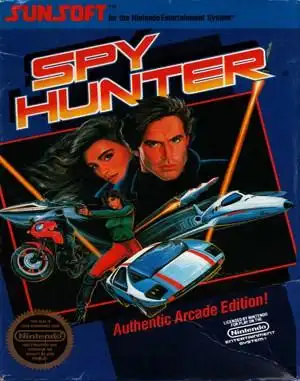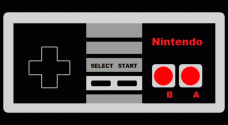Remember the feeling? The urgent, driving beat of that unforgettable theme song, the open road stretching vertically before you, and the constant threat of enemy vehicles trying to take you down. That's the magic of Spy Hunter, a true icon of the 1980s arcade scene that captured the imagination of a generation with its unique blend of driving action and vehicular combat.
More than just a simple driving game, Spy Hunter put you in the shoes (or rather, the driver's seat) of a secret agent behind the wheel of the slick, weaponized Interceptor. It was a fantasy ripped straight from the best spy movies, letting you live out daring escapes and explosive confrontations right there in the arcade.
The Arcade Legend: Birth of Spy Hunter
Released by Bally Midway in 1983, Spy Hunter arrived in arcades with a distinct mission: deliver high-speed thrills with a secret agent twist. The game's design was heavily influenced by the action-packed world of James Bond films, though licensing issues meant the iconic 007 theme was swapped out for another unforgettable piece of spy-fi music: the theme from Peter Gunn. This turned out to be a stroke of genius, as Henry Mancini's catchy, cool tune became synonymous with the game itself.
Developed by George Gomez, the game's concept of a heavily armed car battling foes on the open road, complete with weapon pick-ups from a mysterious truck, struck a chord with players. It quickly became a massive commercial success, dominating arcade charts throughout 1984 and 1985 and solidifying its place in gaming history.
Behind the Wheel: Gameplay That Hooked Us
What made Spy Hunter so compelling? Its core gameplay loop was simple yet addictive. From a top-down perspective, you controlled the Interceptor, navigating a vertically scrolling highway. Your primary goal was survival: destroy enemy vehicles while carefully avoiding civilian cars. Hitting friendlies was a big no-no!
The Interceptor wasn't just fast; it was armed. You started with machine guns, but the real fun came from the weapons van. Pulling up alongside this truck allowed you to acquire limited-use special weapons:
- Oil Slicks: Send pursuing enemies spinning out.
- Smoke Screens: Temporarily blind cars behind you.
- Missiles: A straightforward way to blast foes ahead.
Adding another layer of excitement, certain points on the road featured a boathouse. Driving into it transformed your car into a speedboat, shifting the action to the water and introducing new aquatic enemies, including that persistent helicopter dropping bombs from above. The game lacked a true "ending," instead looping through different environments, challenging you to last as long as possible and rack up that high score.
From Arcade to Living Room: The Home Ports
Given its arcade popularity, it was inevitable that Spy Hunter would make its way to home computers and consoles. Ports appeared on a dizzying array of systems, including the Commodore 64, Atari, Spectrum, ColecoVision, and the Nintendo Entertainment System (NES).
However, porting a fast-paced arcade game with unique controls (the original had a steering yoke and gear shift) to diverse home platforms was often a challenge. While some ports were decent attempts, others struggled to capture the speed and feel of the original.
The NES version, in particular, often draws mixed reactions from retro gamers. While it brought the core concept and the essential Peter Gunn theme home, many felt it lacked the depth and replayability of other NES titles. Its looping structure and sometimes frustrating hit detection could wear thin compared to the quick-hit nature of the arcade. Still, for many, the NES port was their first experience with the game, holding its own special place in their nostalgic memories.
The Legacy Lives On
The impact of the original Spy Hunter extended far beyond its arcade run. It spawned sequels, both in arcades (Spy Hunter II) and on home consoles (Super Spy Hunter on NES, which was actually a different Japanese game rebranded). The franchise was later revived with 3D installments in the early 2000s and a reboot in 2012, attempting to bring the Interceptor's action to modern audiences.
Beyond official sequels, the game's influence can be seen in countless other vehicular combat and driving games. It even popped up in unexpected places, from a pinball machine and other video games (like Lego Dimensions and Gotham Knights) to appearances in TV shows and even a famous Easter egg in Microsoft Excel 2000. The dream of a Spy Hunter film adaptation has also been discussed for years, a testament to the enduring recognition of the title.
Where Can You Play Spy Hunter Today?
Want to take the Interceptor for a spin again? While finding an original arcade cabinet might be tough, there are ways for retro enthusiasts to revisit this classic:
- Compilation Titles: The original arcade version has been featured in various retro game compilations over the years, often appearing on consoles like PlayStation, Xbox, and PC in collections like the Midway Arcade Treasures series.
- Emulation: For the tech-savvy, emulation platforms like MAME can provide a faithful recreation of the arcade experience on PC. Home computer ports can be played using emulators like DOSBox (for PC versions) or specific system emulators.
- Online Archives: Websites like Archive.org sometimes host browser-playable versions of classic games or simulations, offering another avenue to sample the action.
Final Thoughts: Does the Interceptor Still Cruise?
Decades later, does Spy Hunter still hold up? The arcade original, with its pure, focused action and that incredible soundtrack, remains a blast to play in short bursts. It's a perfect example of 80s arcade design – challenging, flashy, and built for high scores.
While the home ports varied in quality, they served as vital gateways for many to experience the game outside of the arcade. Revisiting them today is less about cutting-edge gameplay and more about soaking in the nostalgia, hearing that Peter Gunn theme, and remembering a time when getting weapons from a truck on the highway seemed like the coolest thing imaginable.
Spy Hunter might not have endless depth by today's standards, but its iconic status, unforgettable music, and thrilling concept ensure its place in the hearts of retro gamers. So, buckle up, agent – the road is calling!
FAQ
Q: What is the car in Spy Hunter called? A: The iconic car driven by the player in the original Spy Hunter arcade game is called the G-6155 Interceptor.
Q: What is the music in Spy Hunter? A: The famous theme music used in Spy Hunter is Henry Mancini's theme from the 1950s/60s television show Peter Gunn.
Q: Is Spy Hunter related to James Bond? A: Spy Hunter was heavily inspired by James Bond films, particularly the spy action and gadget-laden vehicles, but it is not an official James Bond licensed game.
Q: Can you play Spy Hunter on modern consoles? A: The original arcade version of Spy Hunter has been included in several retro game compilation titles released on various modern consoles and PC over the years.


